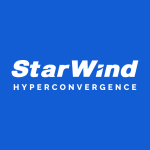What is our primary use case?
We primarily use the solution to run the loudmouth to host our virtual server's core courses.
What is most valuable?
There's user integration with VMware so you don't have to load VMware on top of it and it works right out of the box.
There's good integration between VMware as my hypervisor and the hardware and it is specifically to size.
You don't have to worry too much about the hardware and you don't have to work on integrating a storage device. We instead have this as an all-in-one solution and everything is available as a box.
What needs improvement?
They could make something like an actual catalog where you could just put your weblogs and then you cold can get the recommended specs along with the utilities like which processor to get. That would be an economical way to figure out the specs of the solution in relation to your requirements.
Right now, it's difficult for a non-technical person to participate in using the product. It could be made more consumer-friendly.
It should give output or recommend orders and dissolve effects.
They could be more clear in terms of which options to choose. For example, they could say, "We recommend, if you want high performance, to go with this pack." Or "if you want an economical option, try this".
The solution could improve on some existing features, especially experience-based access or something like that.
The product could benefit from more tightly integrated management.
For how long have I used the solution?
I've only been using the solution for the past six months or so.
What do I think about the stability of the solution?
This generation, the third generation, seems to be the most stable compared to the initial bracket in the market. Of course, after learning from our myriad mistakes through the initial implementation allowed us to make changes and choose more stable options compared to a few years ago.
Especially in the Philippines, we are the number one matching reseller for business-critical items. We utilize multiple units to ensure we have a failover in place. If repairs are delayed for hours, we're covered.
Generally, Dell has a very good presence here. Therefore, we are very stable. The quality of the algorithm is better. You can see the quality of components inside the hardware. They manufacture everything in their own plants in Malaysia. Therefore, they already have hardware components inside the region that are easily accesible.
Failure rates are low compared to Cisco hardware.
What do I think about the scalability of the solution?
The solution is pretty scalable. There are a lot of items that keep adding onto the computing power and storage. It's not like other platforms where you have to plan far ahead if you plan to scale.
How are customer service and technical support?
We've dealt with technical support in the past. We dealt with HP, IBM, and Cisco a long time ago, and we find Dell works hard for us. Their service levels are very good in comparison to other organizations. We're quite satisfied with their level of service.
Which solution did I use previously and why did I switch?
I've used Cisco in the past. I find this solution is easier to implement and offers good hardware and software integrations. We've also worked with IBM and HP a very long time ago. Dell has better customer services than all of them.
How was the initial setup?
In terms of the initial setup, compared to any other platform, it pretty simple. I've used Cisco UCS in the past, and have experience with that solution, and compared to that, this implementation is easy.
It's got a very good integration between hardware and software specific configurations. You just need to watch out for technical inputs.
The maintenance we negotiated as a bundle over years of use. Our partner handles the maintenance of the solution.
What about the implementation team?
We actually had that alteration done through our Dell partner. We chose a partner based on input from Dell about our limitations, what sort of skill set they had, how many engineers were verified, etc., and then we chose our partners. 90% of the population was done by the partner and 10% wherever delegation was needed, they would assist as necessary.
What's my experience with pricing, setup cost, and licensing?
The pricing varies. We were able to negotiate a pretty good position
In India, they gave us something like three years without interest. However, there are various categories in terms of getting the correct payment options on the pricing, they have a lot of options.
They gave us 40% off of this year in the Philippines whereas in India they gave a monthly payment option without interest.
A company can negotiate a price. At my organization, we've always managed very good pricing. Therefore, we have no regrets when it comes to the pricing we have to pay. If you have a good relationship with them, they'll try to take care of you.
What other advice do I have?
We're just a customer. We don't have a relationship with Dell.
We just procured the latest version of the solution.
When we decided on our requirements, we had multiple calls with Dell and the attorneys to ensure that we received what we needed. Apart from choosing various generations or various models on VxRail boxes, we also took to deep dive into the actual configuration on each processor to understand how much memory to use.
It's easier if you have a technical professional on your side when you're dealing with Dell. I'm a technical person, so I could get into the weeds with them. If you are a company without the technical expertise, you're going to run into a bit of trouble as you won't necessarily understand the product or the technical aspects that are being discussed.
I would advise organizations considering implementing the solution to choose your partner really carefully. Ask questions like how many engineers do they have and find out how transparent they are about how they handle the process. I'd look at at least two potential partners and compare their capability and expertise.
Overall, I'd rate the solution nine out of ten.
Which deployment model are you using for this solution?
On-premises
Disclosure: I am a real user, and this review is based on my own experience and opinions.


















